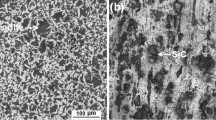Abstract
Galling or severe adhesive wear is a well-known failure mechanism caused by adhesion between sliding surfaces and is frequently found in sheet metal forming (SMF) operations. In SMF operations of materials such as aluminium, transfer and accumulation of sheet material to the stainless steel forming tool surface happens for certain conditions and can result in severe scratching of produced parts and toll steel damage. The aim of the present research work was to assess if load-scanning test rig can be used to evaluate and compare the galling resistance of different engineered surfaces, namely the material couple aluminium—M2 steel under dry and lubricated sliding conditions, for single- and multi-passing tests with increasing normal loads. In order to determine the galling resistance, a new test method resorting to a Computer Numerical Control (CNC) machine was used. It was found that the galling resistance increases through the use of the proper lubrication, as well as for low applied loads.











Similar content being viewed by others
References
Bowden FP, Tabor D (1950) Friction and lubrication of solids. Oxford University Press, Oxford
Gåård A (2008) Wear mechanisms in sheet metal forming—effects of tool microstructure, adhesion and temperature, Karlstad University Studies, DISSERTATION Karlstad University Studies. p. 46
Ying-kel HOU, Zhong-qil YU, Shu-huil LI (2010) Galling failure analysis in sheet metal forming process. J Shanghai Jiaotong Univ Sci 15(2):245–249
Heide EV, Veld AJ, Schipper DJ (2001) The effect of lubricant selection on galling in a model wear test [J]. Wear 251(1):973–979
Podgornik B, Vizintin J, Hogmark S (2006) Improvement in galling performance through surface engineering [J]. Surf Eng 22(2):235–238
Podgornik B, Jerina J (2012) Surface topography effect on galling resistance of coated and uncoated tool steel. Surf Coat Technol 206:2792–2800
Schey JA (1984) Tribology in metal working: friction, lubrication and wear. American Society for Metals, Metals Park
Bay N, Nakamura T, Schmid S, Felder E, Montmitonnet P (Eds.), ICTMP 2010. In: International Conference on Tribology in Manufacturing Processes, MINES, Nice (2010), p. 5
Xie Y, Yao MX (2003) Measurement of the threshold galling stress of hardfacing alloys. Wear 255:509–516
Heikkila I, Slycke L, Sandberg O (2002) Influence of nitrogen alloying on galling properties of PM tool steels. In Proceedings of the Sixth International Tooling Conference on the Use of Tool Steels: Experience and Research, Karlstad, pp. 217–226
Fontalvo GA, Mitterer C (2002) Comparison of the tribological properties of different cold work tool steels at temperatures up to 250 °C. In: Proceedings of the Sixth International Tooling Conference on the Use of Tool Steels: Experience and Research, Karlstad, pp. 191–202
Sheu S, Hector LG, Richmond O (1998) Tool surface topographies for controlling friction and wear in metal-forming processes. J Tribol 120:517–527
Karamis MB (1991) An investigation of the properties and wear behaviour of plasma-nitrided hot-working steel (H13). Wear 150:331–342
Podgornik B, Hogmark S, Sandberg O, Leskovšek V (2003) Wear resistance and anti-sticking properties of duplex treated forming tool steel. Wear 254:1113–1121
Podgornik B, Hogmark S, Sandberg O (2002) Hard PVD coatings and their perspectives in forming tool applications. In: Proceedings of the Sixth International Tooling Conference on the Use of Tool Steels: Experience and Research, Karlstad, pp. 881–891
Escher C, Henke T (2002) New trends in thin coatings for sheet-metal forming tools. In: Proceedings of the Sixth International Tooling Conference on the Use of Tool Steels: Experience and Research, Karlstad, pp. 771–784
Podgornik B, Hogmark S, Pezdirnik J (2004) Comparison between different test methods for evaluation of galling properties of surface engineered tool surfaces. Wear 257:843
Karlsson P, Eriksson J, Gåård A, Krakhmalev P, Olsson M, Bergström J (2012) Galling resistance evaluation of tool steels by two different laboratory test methods for sheet metal forming. Lubr Sci 24:263–272
Acknowledgements
The author Luís M. Vilhena gratefully acknowledges the financial support of the Portuguese Foundation for Science and Technology (FCT), through the program QREN-POPH, reference: SFRH/BPD/92787/2013.
Author information
Authors and Affiliations
Corresponding author
Additional information
Technical Editor: Paulo de Tarso Rocha de Mendonça.
Rights and permissions
About this article
Cite this article
Vilhena, L.M., Antunes, P.V. & Ramalho, A. Galling characterization for the pair composed by aluminium and M2 steel under dry and lubricated conditions by using load-scanning test method. J Braz. Soc. Mech. Sci. Eng. 40, 284 (2018). https://doi.org/10.1007/s40430-018-1188-3
Received:
Accepted:
Published:
DOI: https://doi.org/10.1007/s40430-018-1188-3




